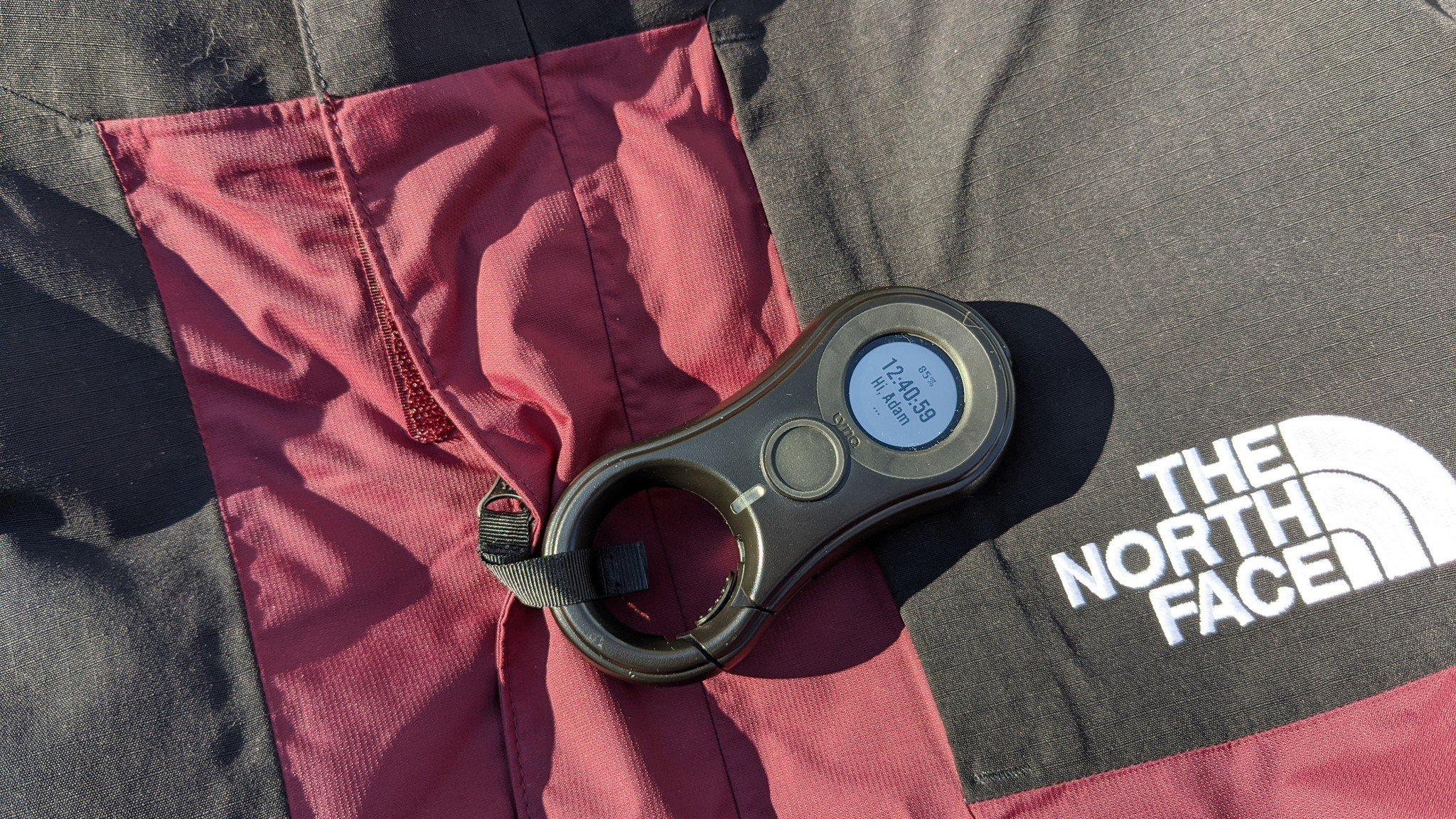Android Central Verdict
Bottom Line LynQ really shines in the simplicity of it's ease of use, solid hardware and one-button interface. Anyone who skis, snowboards, hikes, frequents theme parks, or goes on any sort of adventure will definitely want to explore this product.
Pros
- +
Doesn't need phone, tablet or mobile app
- +
Up to 24 hours battery life, 3-day standby
- +
Can pair with up to 12 in a group
Cons
- -
Slow microUSB charging
- -
Often takes too long to acquire GPS
- -
Pricey if you need multiple units
Why you can trust Android Central
There's no way around it, my kid is a runner. It took me a while to come to terms with it but it's true. We legitimately had a hard time playing outside when he was younger because any time we took our eyes off him he'd be instantly dashing across the yard or out into the street without a second thought. Other activities like hiking or going to the park were a chore as well because the same thing happened — he disappeared in an instant and we have to run after and figure out where he went. Seriously.
Thankfully he's gotten better with age, but for a few years now I've been trying to find a solution to keep track of him when we're out (I'm not a bad parent, I swear). I'm not a big fan of kid leashes (whether they work or not) and knew that there must be some sort of tech solution that would serve me much better.
I explored Bluetooth trackers for a while, did tons of research and tried a few out, but most of those have laggy ping times, clunky hardware or apps, bad battery life or just weren't the ideal solution. It wasn't until just a few months ago that I came across LyNQ and knew right away that my runaway toddler problems were about to be solved.
LynQ People Compass What is it?
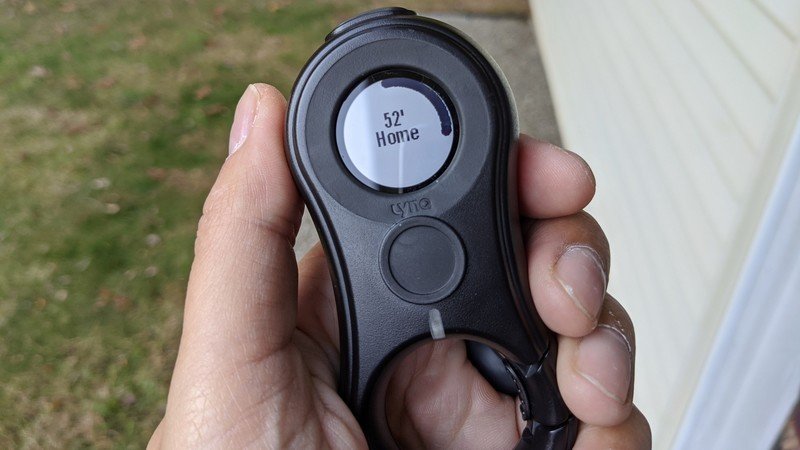
Mind you, LynQ isn't totally marketed toward "active" children, but that's the beauty of it. There are so many great uses for LynQ — from tracking kids or other family members, to pets, to outdoor excursions like skiing, hiking or theme parks, to music festivals and more. The most amazing part of LynQ is that it's a GPS "people compass" that works completely without the help of any other devices or apps. No phone, no tablet, no computer, no nothing. The self-contained unit has just one button and one display — that's it. LynQ made the rounds on Kickstarter and Indiegogo back in 2018 and with over $1.7 million in presales. It's finally ready for prime-time and is now available to purchase starting today.
The most amazing part of LynQ is that it's a GPS location system that works completely without the help of any other tech or apps.
After taking LynQ out of the box and charging it up, you run through a quick setup process. Once you name them, LynQ gives you the option to pair to other devices in your group. You can pair up to 12 individual LynQ units, but in my case I was keeping my group smaller with just three. The units just need to be nearby and pairing works in just a few seconds. From there, you can go through other settings like unit type and timezone. There are also options to set a group zone as well as a home location (more on those later).
The hardware itself is super sturdy and really feels pretty damn close to indestructible. It's "government-tested" (that sounds official at least, right?) and is weatherproof and waterproof so it can withstand pretty much anything mother nature has in store. There's a built-in carabiner-type clip on the end that even has a lock to keep it secured, so you can clip it to backpack, ski gear, jacket, your kids or even just slip in in your bag or pocket.
LynQ People Compass Get going
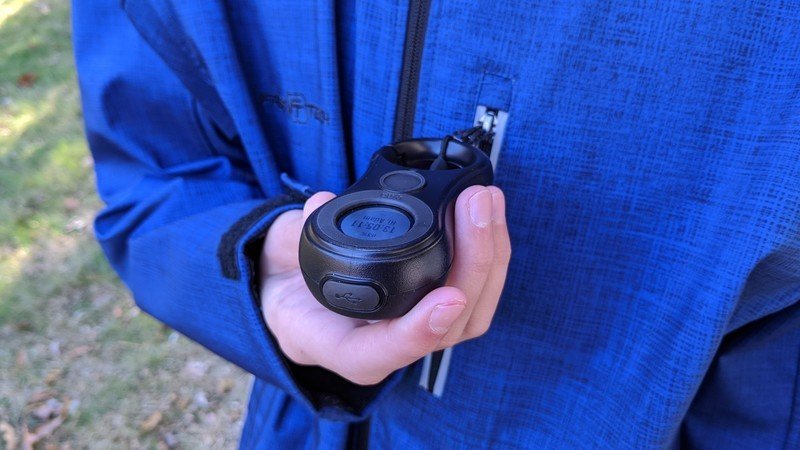
Grabbing a GPS signal on the device can take anywhere up to 15 minutes and of course, it's best to have them outside with a clear view of the sky when you do this. One of my issues may have been the dreary day that I tried it on, but it seemed to take a bit longer than expected to obtain a GPS signal on all of my units — close to 30 minutes for one. One thing that I'm not a fan of is that after my units died and I recharged them for another outing, it seemed to take them just as long to re-establish the GPS signal. Part of me wants them to retain some sort of signal so they don't have to take so long each time, but I guess that's just a limitation of the technologies. It does seem like something that might get in the way if you have them charged to set out on an excursion and forget to let them catch GPS before you move out though. Just something to keep in mind.
Get the latest news from Android Central, your trusted companion in the world of Android
Caveats aside, once the signal is found you'll be able to navigate through using a single button press to figure out where all the other paired users in your group are as well as the home base (should you have one set) which can be your actual home, a trail head, your car, meeting place or anything you want really. You'll just need to set this while you're actually at that location. So you can't say, pick an end point to your hike and set that as your home without actually being there. I think years of using trackers with a phone where you can just drop a pin has jaded me a bit on this, but for LynQ it makes total sense. Also good to note that LynQ has a range of up to 3 miles, which is more than adequate for most people.
Everything that LynQ does is on-device with a single button and a single display.
On the main display you can scroll through paired devices in your group as well as a home location. Once you choose a device to locate, LyNQ shows a small dot on the screen and the distance from said device. When you're farther away LynQ displays a small dot on the circular interface, but as you get closer the dot grows into more of a radial line that rolls around the circumference of the display and then when you're nearby the device, it fills up the circle entirely and notes that you're, well, nearby. I did have some issues at first where it felt like the dot wasn't quite pointing in the right direction, but that didn't happen very often. They were usually pretty spot on as far as which direction the other devices were and how far away they were. "Nearby" devices are usually within a couple of feet and LynQ was accurate for the most part, providing all the units were outdoors. If for some reason a device can't be reached, it's noted as "last seen" and will even tell you that you're indoors if it can't grab a signal.
The other cool option — especially for my use case with my runaway kids — is that you can set a group zone (AKA safezone) and if a tracker goes outside that zone, LynQ will automatically alert you with a message and a flash of the LED. This is one of the best features in that you can use it for your kids or pets and know when they leave the specified area, like a park or your yard. You can set a group zone anywhere from 100 feet up to 1 mile. The only downside here is that you can't specify an exact area and rather have to rely on the preset measurements within LynQ.
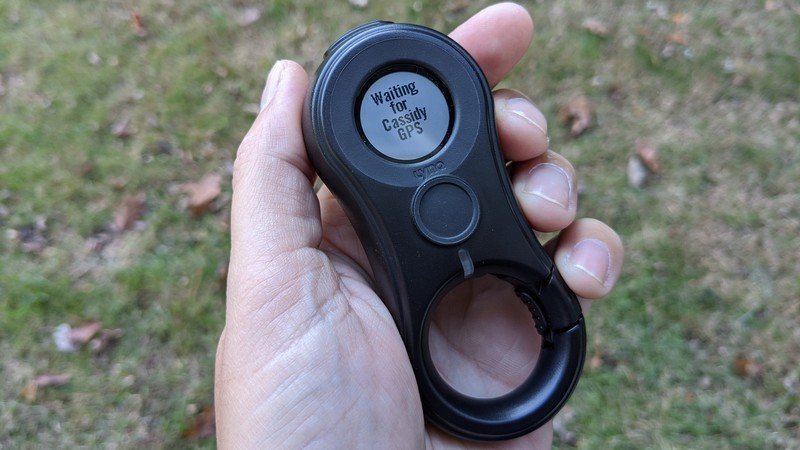
The screen is glare-free and there's also a backlight, but that is based off of the time of day and not actually lighting. So if you're somewhere dark during the daytime, there's no guarantee the backlight will be on. Another great feature is that when the device is upside down — clipped to your jacket or bag for example — the display shows a simplified interface with just the time and device name. When you put it upright by moving it to view the display, it comes right back to life. There's also a standby mode for when you're not actively using the device to help save on battery.
Speaking of battery, with mixed usage, LynQ is said to go for about 24 hours before needing a charge. If you need to prolong that, you can use standby mode and have it hang on for up to 3 days. This will obviously vary greatly depending on your use though. For me, it was just fine as we were only out for a few hours at a time. But for those longer adventures, you might need to top it off after a full day of use. Another thing to note here is that if you're gallivanting out in the wilderness and want to use LynQ for more than the allotted battery life or multiple days and trips, you'll need a way to charge however many units you're using, each of which takes a few hours. That might be a dealbreaker for some with limited resources. Whatever the case, you'll definitely want to grab a microUSB splitter like this if you have more than a few to charge at once.
4.5 out of 5
Overall I'm a huge fan of LynQ. As I said earlier, this is something I'd been seeking out for quite some time and now that I've had a chance to use these in real-life situations, I can only say good things about LynQ. Sure there are still some hiccups when it comes to grabbing that GPS signal or figuring out the best way to go about charging (let's not get into them being microUSB in 2020) but I'd be hard-pressed to find any other major faults with this setup.
Perhaps the best part is the liberation from all other attached technology. Unlike other trackers — even those that are standalone units — LynQ really shines in the simplicity of its ease of use, solid hardware and one-button interface. Anyone who skis, snowboards, hikes, frequents theme parks, or goes on any sort of adventure will definitely want to explore LynQ. Even moreso if you're like me and have other people you want to keep track of like kids or elderly family members or those with special needs (don't forget about Fido).
There's truly is nothing like LynQ and it's really a unique piece of technology that I'm ecstatic to have found. As winter blows through, I can't wait to put it to even harsher use on the slopes or maybe for that long-awaited family trip to Disney. The uses really are endless and you can bet LynQ will be one of my favorite pieces of tech for the forseeable future.
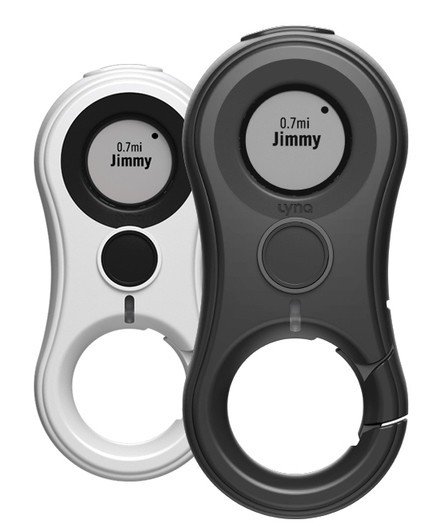
Track kids, pets, or hiking buddies without killing your phone.
LynQ really shines in the simplicity of its ease of use, solid hardware and one-button interface. Anyone who skis, snowboards, hikes, frequents theme parks, or goes on any sort of adventure will definitely want to explore this product.

Adam is the Editorial Director of High-Yield content at Future. Leading an outstanding team, he oversees many articles the publisher produces about subscriptions and services including VPN, TV streaming, and broadband. In addition to identifying new e-commerce opportunities, he has produced extensive buying guides, how-to-watch content, deal news, and in-depth reviews. Adam's work can be seen on numerous Future brands including TechRadar, Tom's Guide, T3, TTR, Android Central, iMore, Windows Central, and Real Homes.
